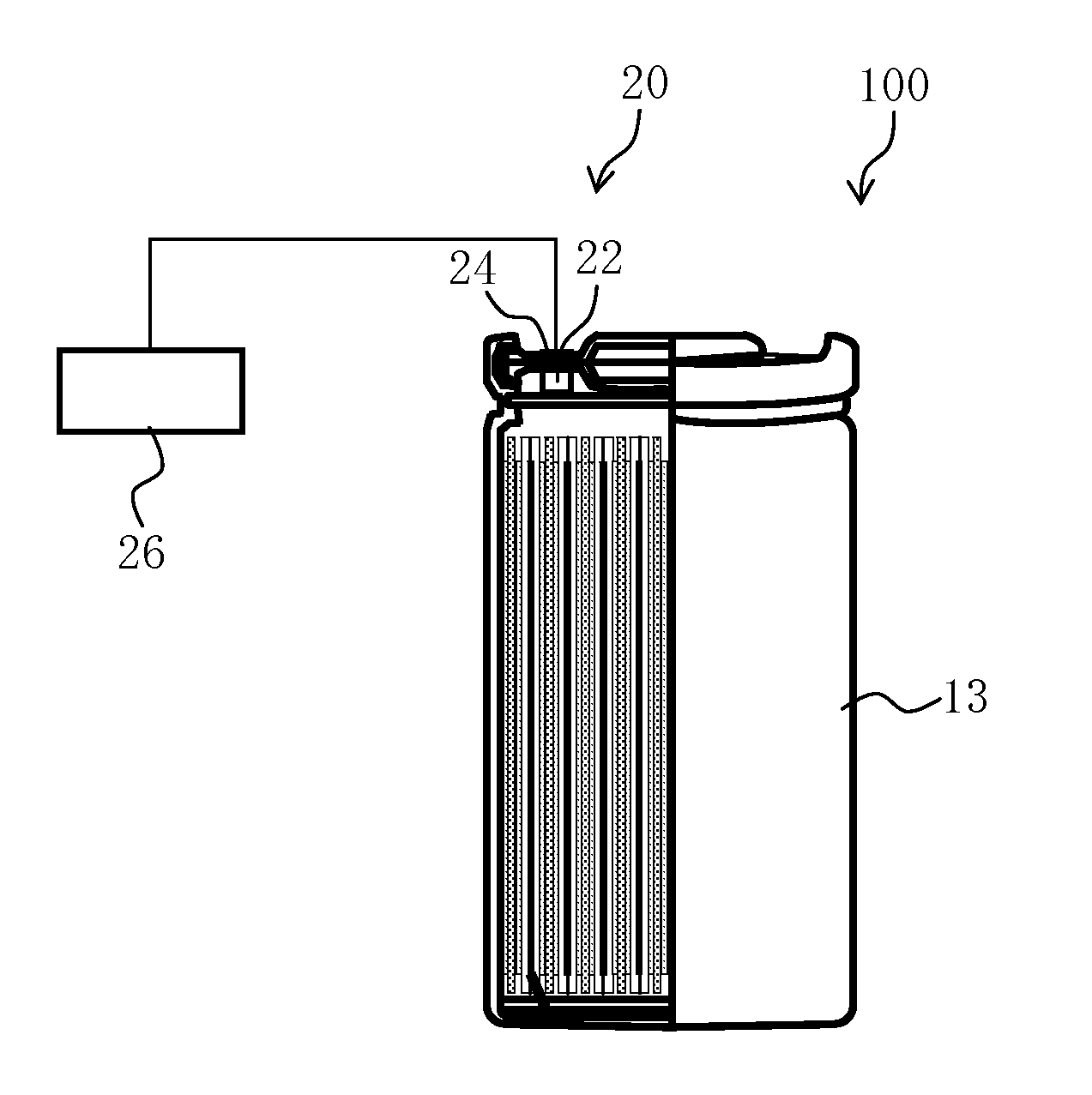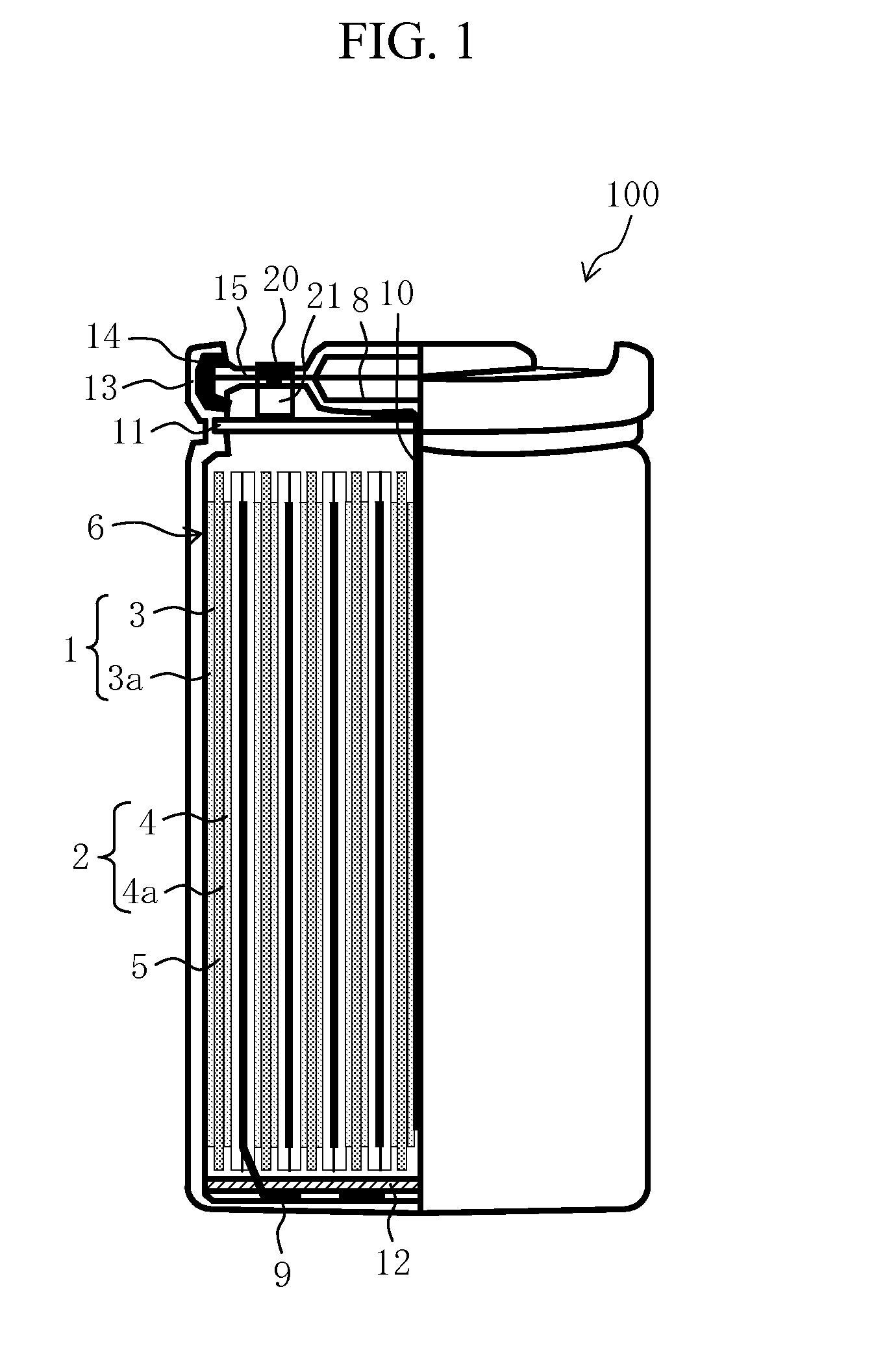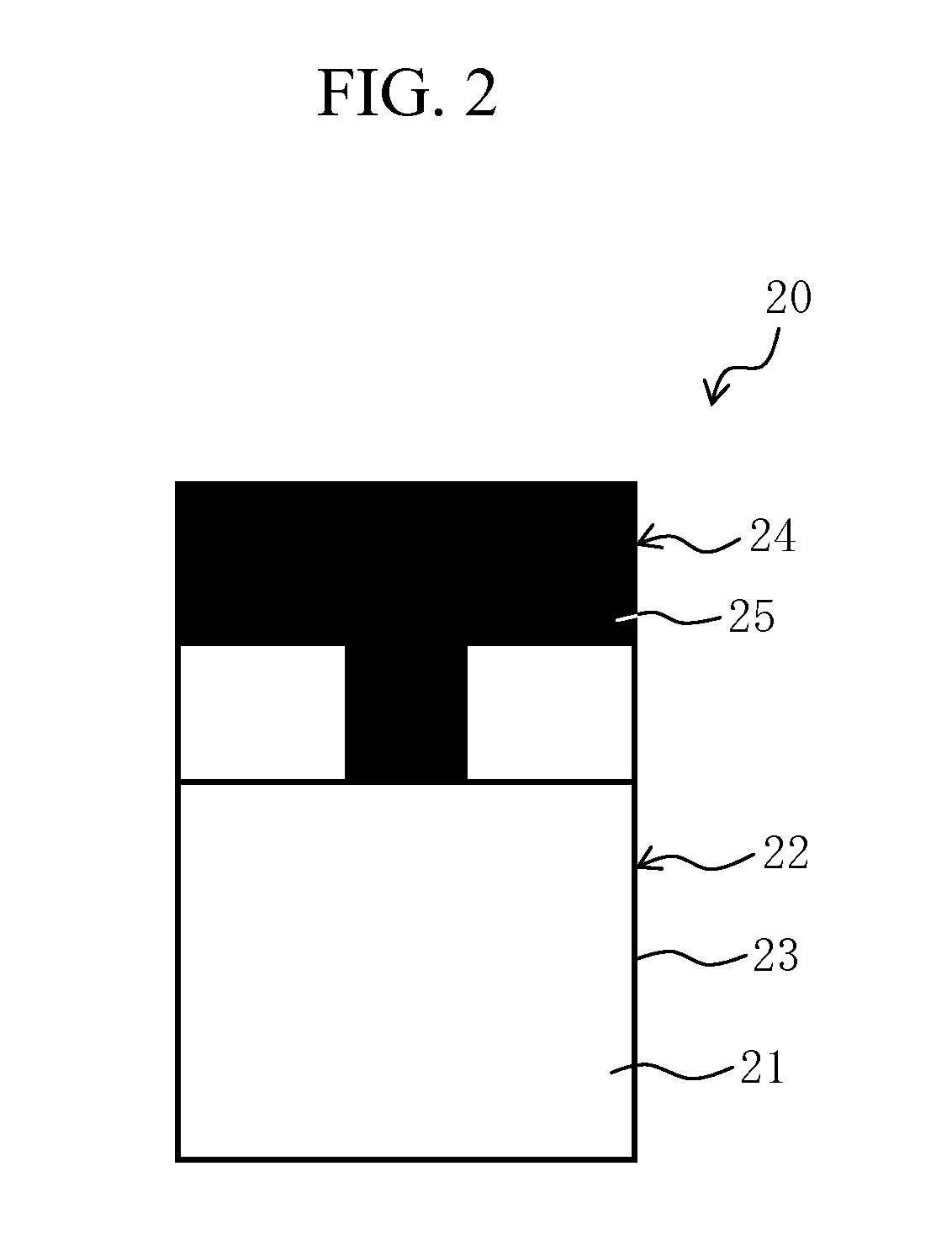Lithium-ion battery and method for regenerating the same
- Summary
- Abstract
- Description
- Claims
- Application Information
AI Technical Summary
Benefits of technology
Problems solved by technology
Method used
Image
Examples
example 1
Battery Production
[0075]A lithium-ion battery 100 was produced in this Example by the method described below.
[0076]First, a positive electrode material paste was prepared with the use of LiMn1 / 3Ni1 / 3Co1 / 3O2 as a positive electrode active material, carbon black (CB1) and graphite (GF2) as electronically conductive materials, polyvinylidene fluoride (PVDF) as a binder, and NMP (N-methyl pyrrolidone) as a solvent such that the component ratio in terms of the dry solid weight became LiMn1 / 3Ni1 / 3Co1 / 3O2:CB1:GF2:PVDF=86:9:2:3.
[0077]The obtained positive electrode material paste was applied to aluminum foil used as a positive electrode current collector 3. The obtained product was dried at 80° C., pressed by a pressure roller, and then dried at 120° C. Accordingly, a positive electrode mixture layer 3a was formed on the positive electrode current collector 3. Thus, a positive electrode 1 was prepared.
[0078]Next, a negative electrode material paste was prepared with the use of a pseudo-iso...
example 2
[0087]Battery preparation and evaluation were carried out in the manner described in Example 1 except that DMAC was used as a coating film forming agent. Table 1 lists the results. The initial DCR was 66 mΩ. The DCR increase was 10% on Day 100 of preservation.
PUM
 Login to View More
Login to View More Abstract
Description
Claims
Application Information
 Login to View More
Login to View More - R&D
- Intellectual Property
- Life Sciences
- Materials
- Tech Scout
- Unparalleled Data Quality
- Higher Quality Content
- 60% Fewer Hallucinations
Browse by: Latest US Patents, China's latest patents, Technical Efficacy Thesaurus, Application Domain, Technology Topic, Popular Technical Reports.
© 2025 PatSnap. All rights reserved.Legal|Privacy policy|Modern Slavery Act Transparency Statement|Sitemap|About US| Contact US: help@patsnap.com



